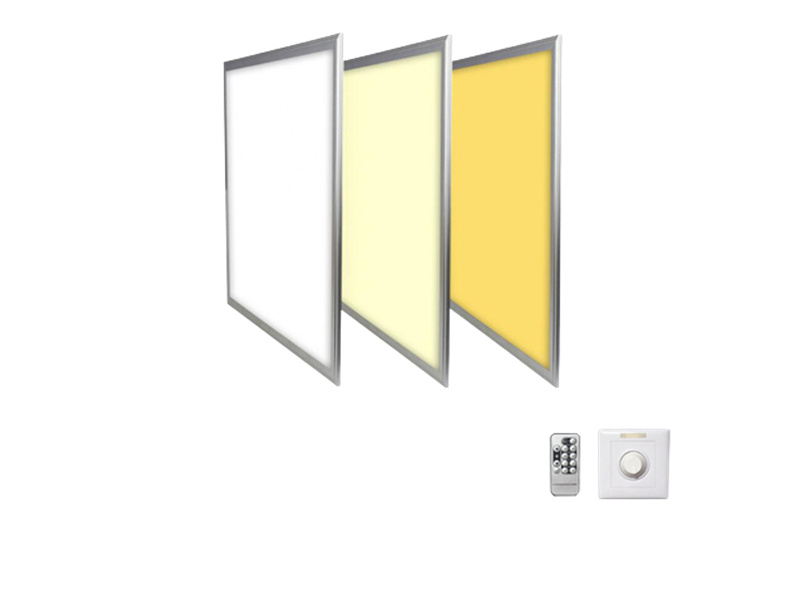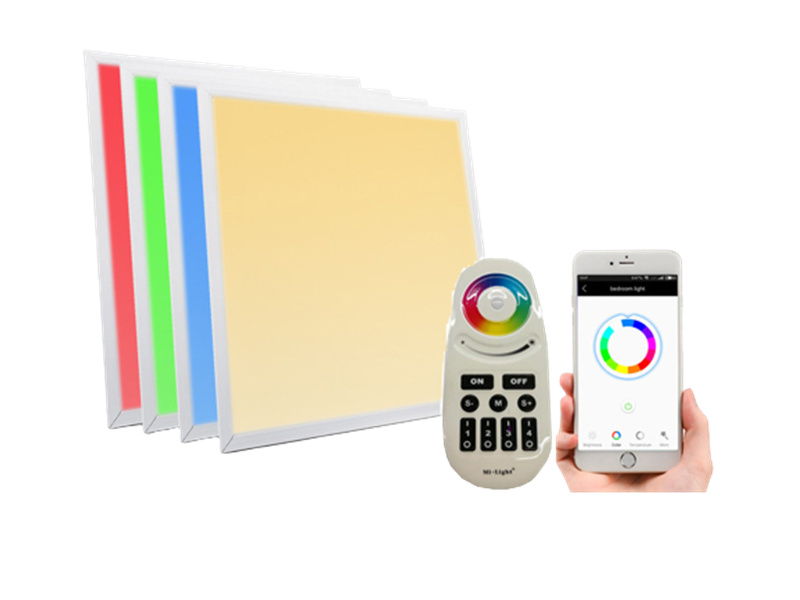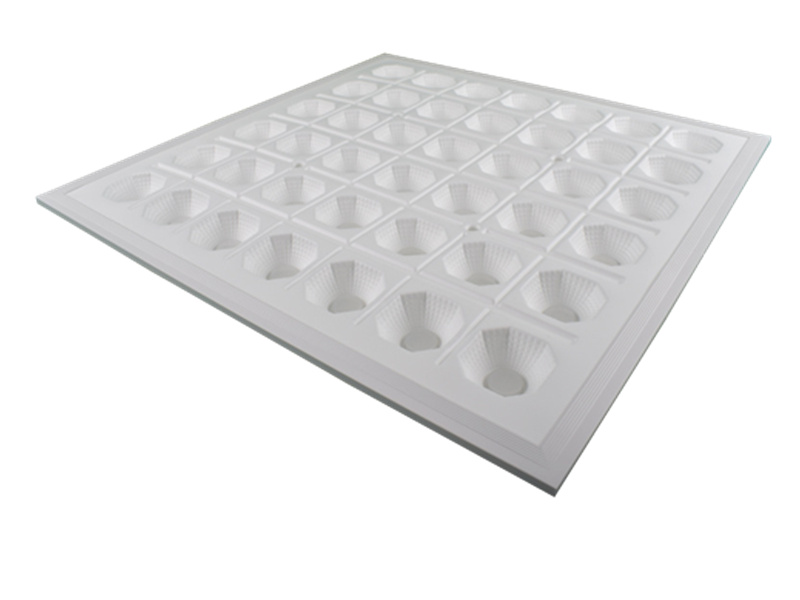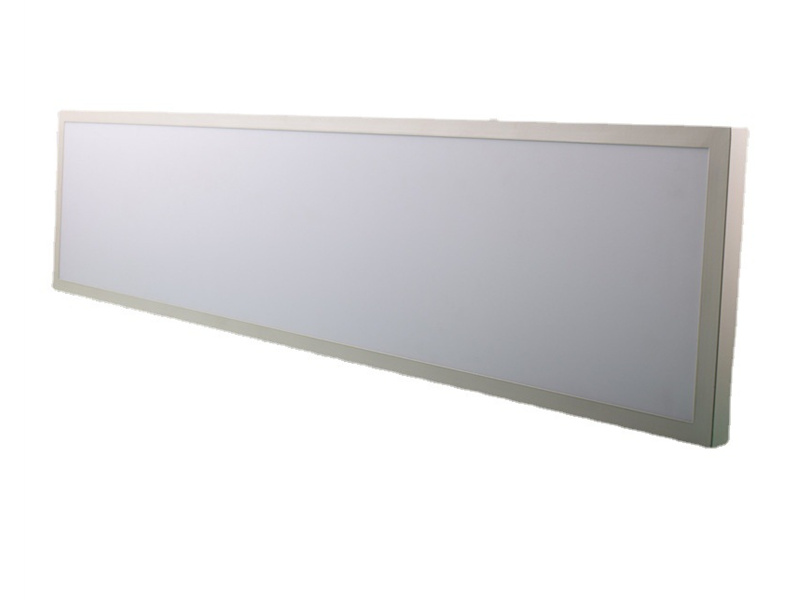LED Panel Light
Ledhome will provide LED panel lights with robust quality and reasonable prices for you.
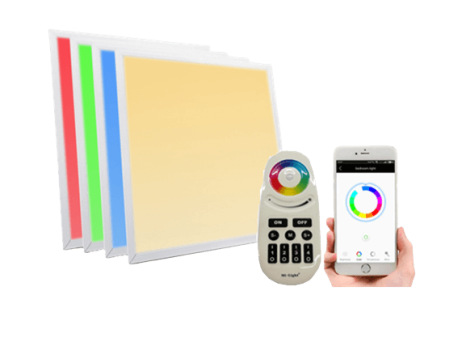
LED panel lights are a type of lighting fixture that uses light-emitting diodes (LEDs) as the primary light source. They are designed to replace traditional fluorescent ceiling lights in commercial and industrial settings, such as offices, hospitals, schools, and retail stores.
Ledhome main supply categories are: ceiling panel light led, led flat panel light, led panel light dimmable, RGB led panel light, and waterproof led panel light. Suitable for hotels, bars, western restaurants, cafes, home interior decoration, and indoor lighting, can directly replace the original traditional fluorescent lamp, and its brightness is higher.
-
LED Panel Light
600×600 LED Panel Light Dimmable (40W)
-
LED Panel Light
600×600 LED Panel Light RGB (36W)
-
LED Panel Light
600×600 Anti-Glare Grille LED Panel Light (60W)
-
LED Panel Light
600×600 Anti-Glare Grille LED Panel Light (48W)
-
LED Panel Light
300×1200 Surface Ceiling Panel Light LED (48W)
-
LED Panel Light
300×1200 Surface Ceiling Panel Light LED (40W)
-
LED Panel Light
600×600 Surface Ceiling Panel Light LED (48W)
-
LED Panel Light
600×600 Surface Ceiling Panel Light LED (40W)
Composition of LED Panel Light
1. Outer frame and back cover
The outer frame of the LED panel lamp has different heat dissipation performances according to different materials, and the price is different. They are the main channel of led heat dissipation, simple and generous appearance, usually 6063 aluminum profile.
The main function of the back cover is to seal the LED panel light. Generally, 1060 aluminum is used, and it can also play a role of heat dissipation.
2. Light guide plate and the diffusion plate
The light guide plate refracts the side LED light through the dot so that the light is uniformly exported from the front. It is the key point of the quality control of the LED panel light. The quality of the light guide plate is one of the most important factors to determine the quality of the LED panel light. The use of high-quality light guides can make the finished LED panel light shine more evenly. There will be no dark spots, water ripples and other conditions.
Diffuser plate will light guide plate uniform export, but also play the role of the fuzzy dot. Diffusion plate generally uses PMMA 2.0mm sheet or PC material, the difference is PS material, PMMA cost is low and the transmittal rate is slightly higher than PC, acrylic brittle anti-aging performance is weak, PC price is slightly expensive, but the anti-aging performance is strong. After the diffusion plate is installed, the dot can not be seen, and the transmittance should be about 90%. PMMA transmittances in 92%, PC is 88%, PS is about 80%, we can according to the demand for diffusion plate material selection, most manufacturers are using PMMA materials.
A reflective paper is used to reflect the light from the back of the light guide plate to improve the light effect, generally RW250.
3. LED source
Good LEDs not only stable performance, good brightness, light decay is small, and the color index is much better. It’s mostly made with 11×23 or 11x26mil chips.
4. Aluminum PCB
The LED panel light has 4pcs PCB for four inlet lights and 2 aluminum substrates for two inlet lights.
5. Driver
The driver is also the most important factor affecting the price of LED panel lights. If driver use is not good, directly affects the life of the LED panel light. UL Drivers, TUV Drivers, other CE Drivers.
6. Install accessories
Suspension wire, mounting bracket and other accessories for mounting and fixing.
Features of LED Panel Light
LED panel lights have a variety of features that make them a popular choice for commercial and industrial settings. Here are some of the most common features of LED panel lights:
Energy efficiency: LED panel lights use less electricity than traditional fluorescent lights, which can help to lower energy costs.
Long lifespan: LED panel lights have a longer lifespan than traditional light sources, which can reduce the need for frequent replacements and maintenance.
Versatility: LED panel lights are available in a variety of sizes and shapes, and can be either recessed or surface-mounted, making them a versatile lighting option for a wide range of applications.
High quality light: LED panel lights have a higher color rendering index (CRI) than traditional light sources, which means they accurately represent the colors of objects they illuminate.
Low heat emission: LED lights have very low heat emission. This helps in keeping the environment cool and comfortable.
Dimming capability: Some LED panel lights can be dimmed, which allows for additional control over the light levels in a space.
Eco-friendly: LED lights are considered to be an eco-friendly lighting option as they emit less greenhouse gases and other pollutants.
Easy installation: LED panel lights are easy to install and maintain. They come in standard sizes, as well as customized sizes to suit the unique requirements of different spaces.
Smart control: some LED panel lights comes with the feature of smart control, which allows to control the brightness and color of the lights via phone app or other smart devices.
Overall, LED panel lights are a cost-effective and energy-efficient alternative to traditional light sources and offer a range of features that make them a popular choice for commercial and industrial settings.
Application
LED panel lights have a wide range of applications and can be used in many different types of commercial and industrial settings. Some common applications of LED panel lights include:
Office lighting: LED panel lights are a popular choice for office lighting because of their energy efficiency and long lifespan. They can be used to illuminate large open-plan spaces, as well as smaller private offices and conference rooms.
Retail lighting: LED panel lights are often used in retail stores, supermarkets, and other commercial spaces. They provide bright, even lighting that can make merchandise and products look more appealing.
Hospitality lighting: LED panel lights are used in hotels, restaurants, and other hospitality settings. They provide a bright and even light that can help to create a welcoming atmosphere.
Industrial lighting: LED panel lights are often used in factories, warehouses, and other industrial settings. They are robust, durable and provide bright lighting.
Educational lighting: LED panel lights are used in schools, colleges and universities. They provide bright, even lighting that can help to create an optimal learning environment.
Healthcare lighting: LED panel lights are used in hospitals, clinics, and other healthcare settings. They provide bright, even lighting that can help to create a comfortable and healing environment.
Transportation lighting: LED panel lights are used in airports, train stations, and other transportation hubs. They provide bright, even lighting that can help to create a safe and comfortable environment for passengers.
Residential lighting: LED panel lights are also being used increasingly in residential settings, to provide bright and even lighting to living areas, kitchens, and bedrooms.
Overall, LED panel lights are versatile lighting solution and can be used in a wide range of different commercial, industrial, residential settings. They are energy-efficient, have long lifespan and can be easily installed and maintained, which makes them a popular choice for many different types of spaces.
How to Choose LED Panel Light?
When choosing LED panel lights, there are a few key factors to consider to ensure that you select the right product for your specific needs.
Lumens: The lumen output of an LED panel light is an indicator of how much light it produces. Make sure to choose an LED panel light that has the appropriate lumen output for your space.
Color Temperature: LED panel lights come in different color temperature options, measured in Kelvins (K). The most common color temperatures for LED panel lights are 3000K, 3500K, 4000K and 6000K. Choose a color temperature that matches the desired ambiance for the specific room or space.
CRI: Color Rendering Index (CRI) is a measure of how well a light source reproduces colors. A higher CRI value means that the colors of objects will appear more true to life under the light.
Size and Shape: LED panel lights are available in a variety of sizes and shapes. Select the right size and shape of the panel light that fits the space you’re looking to light.
Installation type: LED panel lights come in two types of installation, Recessed, and Surface-mounted. Choose the installation type that best suits the type of ceiling or space you have.
Power Consumption: Make sure that the power consumption of the LED panel light is suitable for the area you wish to light.
Dimmability: Some LED panel lights are dimmable, which can provide additional control over the light levels in a space. If you would like this feature, make sure to choose an LED panel light that is dimmable.
Smart Control: if you want to control the lighting from a distance or program it based on certain time or usage, consider choosing an LED panel light that can be controlled by phone app or other smart devices.
Brand and warranty: Check the warranty period of the LED panel light before making a purchase, and consider the brand reputation as well.
By considering these factors, you can make an informed decision about which LED panel light is best for your specific needs. Be sure to check the specification sheet from the manufacturer for more detailed information and ensure the LED panel light you choose meets your requirement and regulation.
How to install?
Installing an LED panel light is a relatively simple process, but it’s important to follow the manufacturer’s instructions carefully. Below is a general guide on how to install an LED panel light:
First, turn off the power to the area where you will be installing the LED panel light. This is an important safety step and should never be skipped.
Measure and mark the location for the light on the ceiling. This is where you will need to cut a hole for the light to fit into.
Cut a hole in the ceiling at the marked location using a drywall saw or other appropriate cutting tool. The hole should be slightly smaller than the LED panel light, to ensure a snug fit.
If the LED panel light is recessed type, attach the mounting bracket to the panel light by following the manufacturer’s instructions. This bracket is used to secure the panel light in place once it’s inserted into the hole.
Carefully lower the panel light into the hole in the ceiling, making sure that it’s centered and level. If it’s a surface-mounted type, simply fasten the light to the bracket.
Connect the electrical wires to the corresponding wires of the panel light. Make sure to match the colors of the wires and use wire nuts to secure the connections.
Insert the panel light into the hole and secure it in place using the mounting bracket.
Turn the power back on and test the light to ensure that it’s working properly.
It is always recommended to hire a professional electrician for the installation of the LED panel light, particularly if you’re unsure about your electrical wiring skills or the regulations in your area.
Keep in mind, different LED panel lights may have a slightly different installation method, refer to the instruction manual of the product you are working with to ensure you are following the correct installation steps.
FAQs for the LED Panel Light
Please don’t hesitate to contact us if your question doesn’t find the corresponding answer below, , we are glad to help you.
LED panel lights are a type of lighting fixture that uses light-emitting diodes (LEDs) as a source of light. These lights are designed to be installed in ceilings, and are often used in commercial and industrial settings, such as offices, schools, and hospitals.
LED panel lights use a series of LEDs arranged in a grid behind a diffuser panel. The diffuser panel spreads the light evenly across the surface of the panel, providing a bright, even illumination. The LED drivers convert the electricity into the proper current for the LED.
- Energy efficiency: LED panel lights use less energy than traditional lighting fixtures, which can lead to significant energy savings over time.
- Long lifespan: LEDs have a much longer lifespan than traditional light sources, which means they require less frequent replacement.
- Low maintenance: Since LEDs last longer and use less energy, they require less maintenance than traditional lighting fixtures.
- Variety of color: LED panel lights come in a variety of color temperatures, which allows you to choose the right light for the task at hand.
- High quality of light : LED panel lights tend to emit high-quality light. They are good for task lighting and color rendering
Installing LED panel lights typically involves cutting a hole in the ceiling, mounting the LED panel light in the hole, and connecting it to a power source. It is important to use the proper tools and to follow the manufacturer's instructions for installation. If you are not comfortable with the installation process, it is recommended to hire a professional electrician.
Warranties for LED panel lights vary depending on the manufacturer and the product. Some manufacturers offer warranties of up to 5 years, while others may offer longer warranties. Make sure to read the product's documentation for details on the warranty for the specific LED panel light you are interested in.
Contact us for a quick quote to make your lighting business more profitable
Talk to us about your needs, let our business more easily!

